National Guard Wants To Deploy More Alongside Army: NGB Chief Lengyel
Posted on
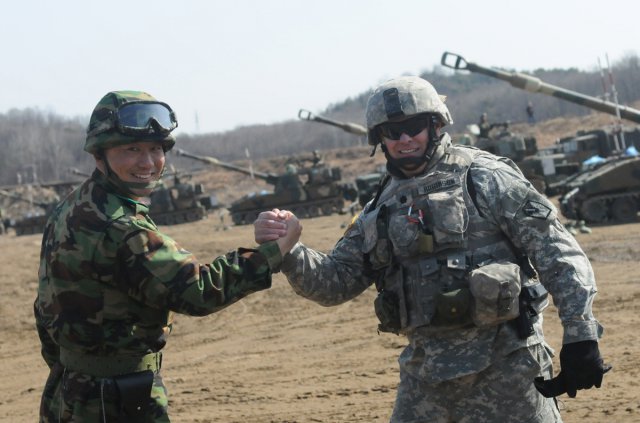
A Utah Guard artilleryman during an exercise in Korea.
WASHINGTON: In stark contrast to past disputes, the head of the National Guard Bureau took pains today to praise the Army Chief of Staff for bringing full-time and part-time troops together. In particular, NGB director Gen. Joseph Lengyel said, the National Guard can train and deploy more often alongside the regular Army, it wants to do more, and thanks to Army chief Mark Milley’s Associated Units pilot program, it’s well on its way to doing more.
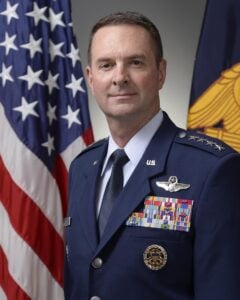
Gen . Joseph Lengyel
Gen. Lengyel’s Defense Writers Group breakfast this morning was dominated by questions about California National Guard soldiers being forced to refund bonus payments made in error – or in some cases, fraudulently – prior to 2009. (Defense Secretary Ash Carter paused repayments just hours later). But Lengyel was naturally more eager to discuss the Guard’s future prospects than its past mistakes. After several years of bitter debate over Army plans to cut Guard units, especially AH-64 Apache gunships, it was refreshing to see the Guard’s top officer so enthusiastic about an Army chief of staff’s initiatives.
Relations between the two components “haven’t been all that good,” Lengyel said bluntly. “(But) I will tell you that Gen. Milley, Gen. (Robert) Abrams (who replaced Milley as head of Forces Command), they’ve totally changed the tone of the relationship, the access, the utilization of the Guard force structure.”
Today, “relations are great,” said Lengyel. “We’ve had bad budgets, (and) when resources are an issue, there’s always going to be tension,” he acknowledged, but since sequestration struck in 2013, budgets have at least been stable, albeit still too low: “There’s been no new bad news for a while.”
What’s new, instead, is the Chief of Staff’s eager outreach to the Guard. “Gen. Milley is planning on using the National Guard, in an operational sense, deployed to Europe, deployed to Afghanistan, deployed to Iraq (and) around the world,” Lengyel said – and the Guard can gladly meet the demand.
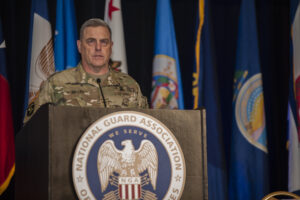
Gen. Mark Milley addresses the National Guard Association of the US
“There’s additional capacity for us to provide more, particularly in the Army, on a regular basis,” Lengyel said. Currently the Army National Guard deploys about 12,000 soldiers a year, he said, compared to 60,000 a year for most of the (previous) Iraq war and 100,000 at the peak of Guard deployments in 2005.
But didn’t those deployments grind down the Guard, not only exhausting soldiers but straining their relationships with family and civilian employers? First, the Army’s not planning to go anywhere near the post-9/11 peak. Second, troops who’ve joined the Guard since 9/11 expect and want to be deployed – otherwise they wouldn’t have signed up. In fact, one of the first proposals that sparked conflict was canceling planned deployments of Guard units to Bosnia and the Sinai.
“Frankly, servicemembers will endure higher levels of training and more time away from their jobs and their families if it results in a deployment at the other end,” Lengyel said. “If they’re going to do all this training, they want to and expect to be sent to go to do something with it, whether it’s Afghanistan or Iraq or anywhere around the globe. Servicemembers today expect to be deployed in their available year, they want to be deployed.”
The “available year,” for most Army Guard and Reserve units, is the one year in six when they’re at peak readiness and on-call for deployment. Guard units are funded to train 39 days in a typical year – that’s the classic “one weekend a month, two weeks a year,” although many personnel voluntarily do more – but that increases to 45 days two years before their availability and then 54 days in the year before. The predictability of this cycle is vital for citizen-soldiers seeking to balance military service, civilian jobs, and family life, Lengyel emphasized.
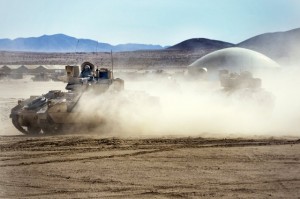
Army heavy armor at the National Training Center on Fort Irwin, California.
Guard and Reserve troops picked for Gen. Milley’s pilot program will routinely get 54 training days a year, plus special access to such resources as the Army’s famed Combat Training Centers. Each Guard and Reserve unit selected has been assigned a regular active-duty unit (usually a larger unit) as a partner – hence the term “associated unit” – with which it will conduct personnel exchanges and joint training. While associated status doesn’t necessarily come with money for equipment modernization, the Guard and Reserve units must be brought up to a level where their gear is at least compatible with the active-duty partner. In a significant emotional event for the Army’s tribal culture, the partnered units will even wear each other’s insignia.
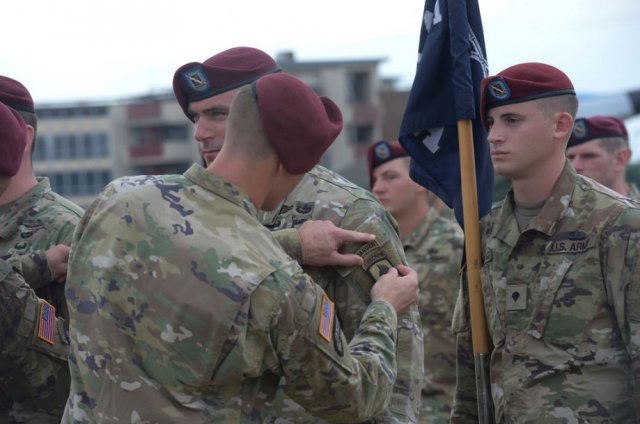
Guard troops put on the patch of their associated active-duty unit.
Some 11 Guard units and three Reserve ones are partnered with 13 active-duty units (some small units share a partner) in the three-year pilot. What’s more, while the Guard has long feared that their combat brigades would be sidelined and their forces relegated to support roles, the 11 selected Guard units include an infantry division headquarters, an armored brigade, two infantry brigades, and two infantry battalions. The Guard support units involved, by contrast, are fewer and smaller: a single engineer brigade and four independent companies.
The pilot program doesn’t include actual deployments – yet. “Right now, so far, it hasn’t evolved to the point that these units will pack up and deploy and go fight together,” Lengyel said, “but I think that’s kind of the long-term goal.”
“The Air Force has done this for decades…but the Air Force deploys in much smaller chunks,” Lengyel said. An Air National Guard associated unit can deploy, say, a dozen planes for a couple weeks, falling in on the logistics, maintenance, and command-and-control of an active-duty air wing already deployed. Ground units don’t deploy that way, said Lengyel: “The Army goes in bigger chunks, so it’s a little bit more complicated.”
But the Air Force model of associated units holds out great hope for the Army, said Lengyel, an Air National Guard officer himself. Blending the Air Force’s components took decades of work – the process really began after the 1991 Gulf War, when the Air Force realized it had to maintain no-fly zones indefinitely – and “it’s been anything but easy,” he said. “(But) now, the Air Force is held out as kind of nirvana… The Army’s well on their way to doing that.”
Subscribe to our newsletter
Promotions, new products and sales. Directly to your inbox.
